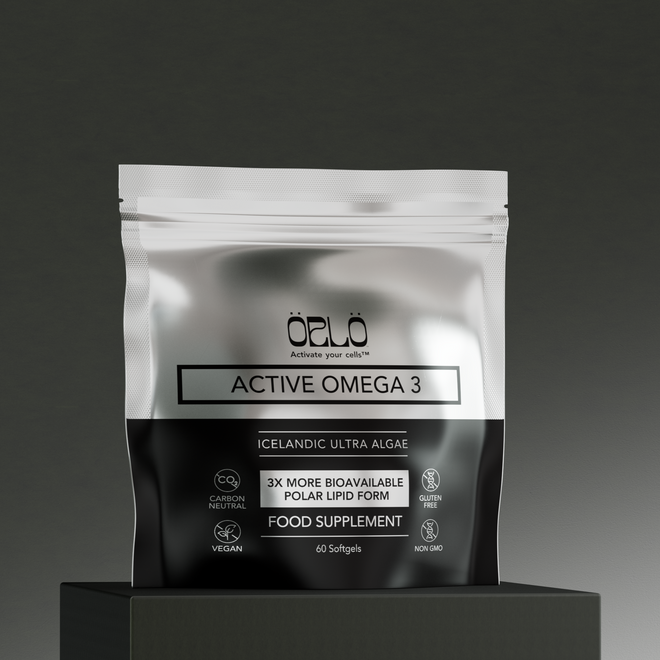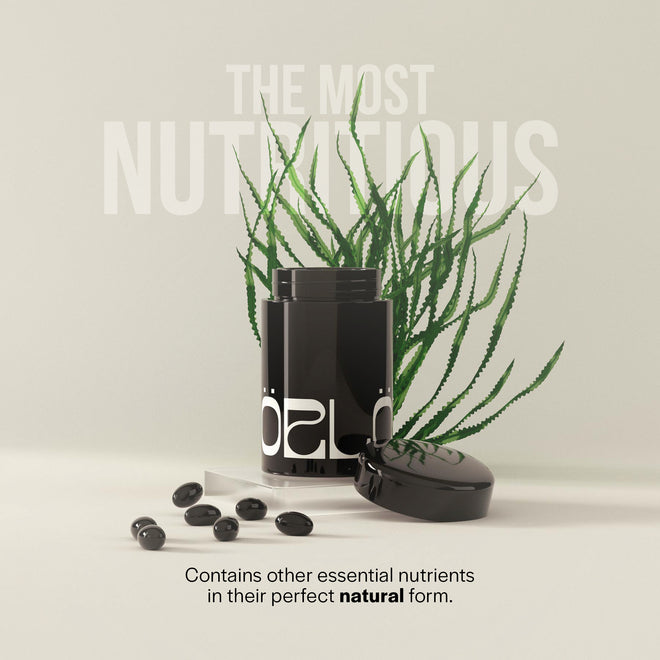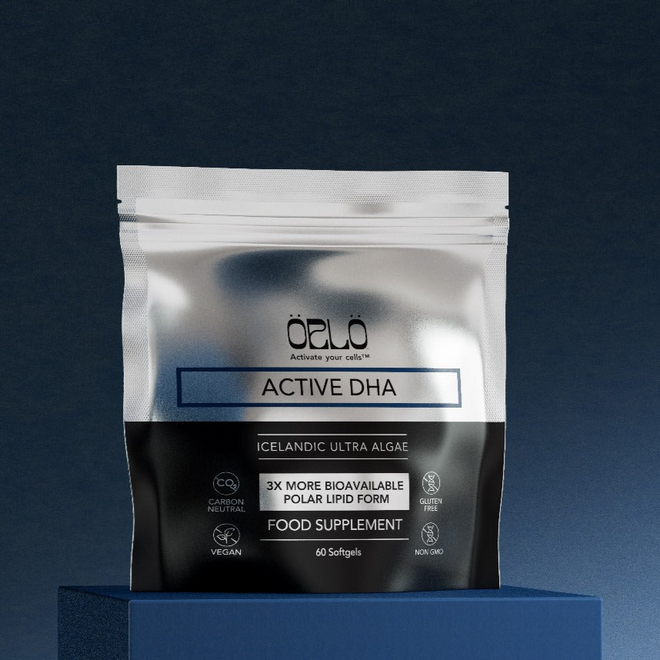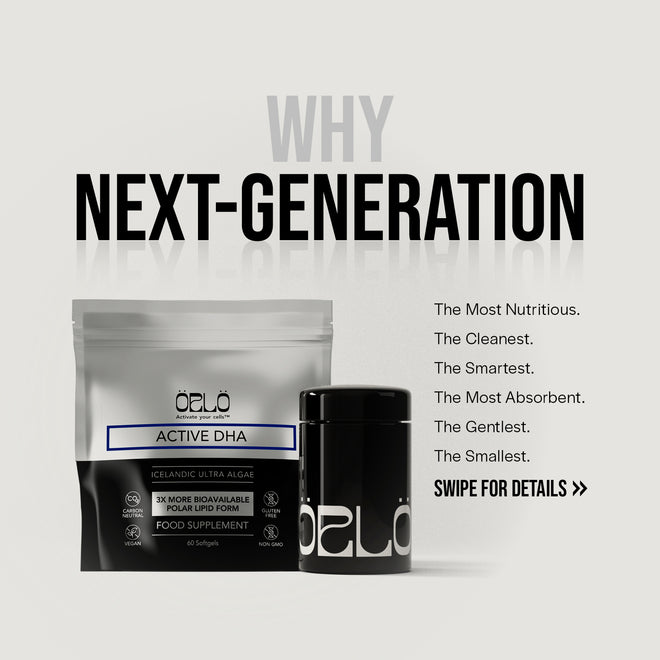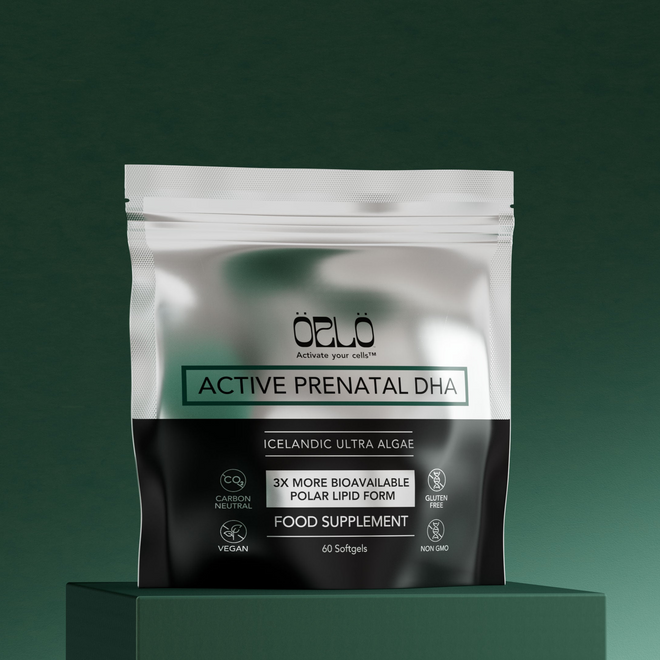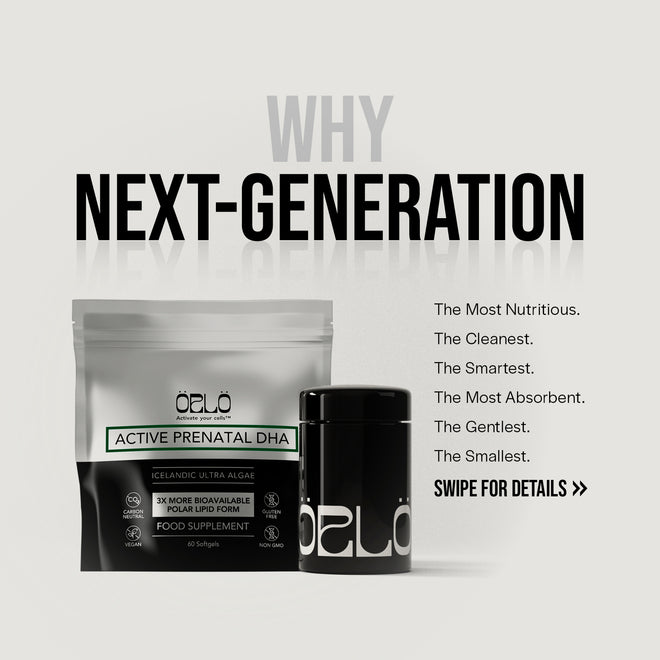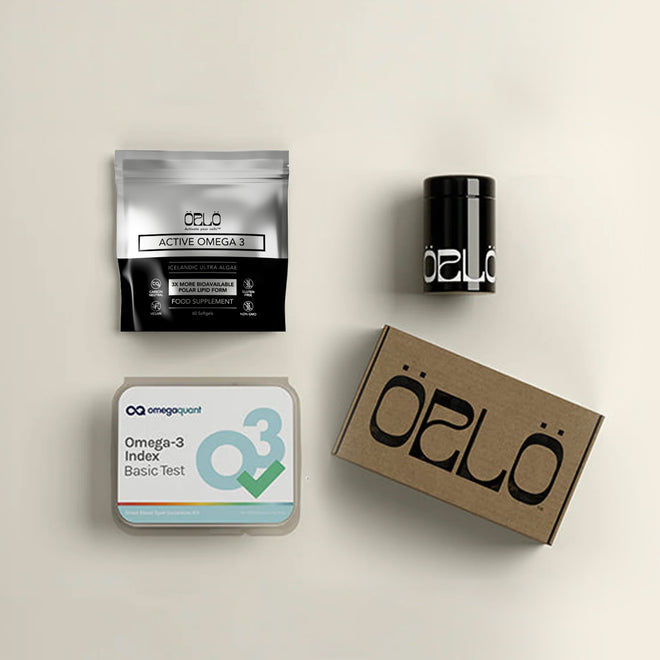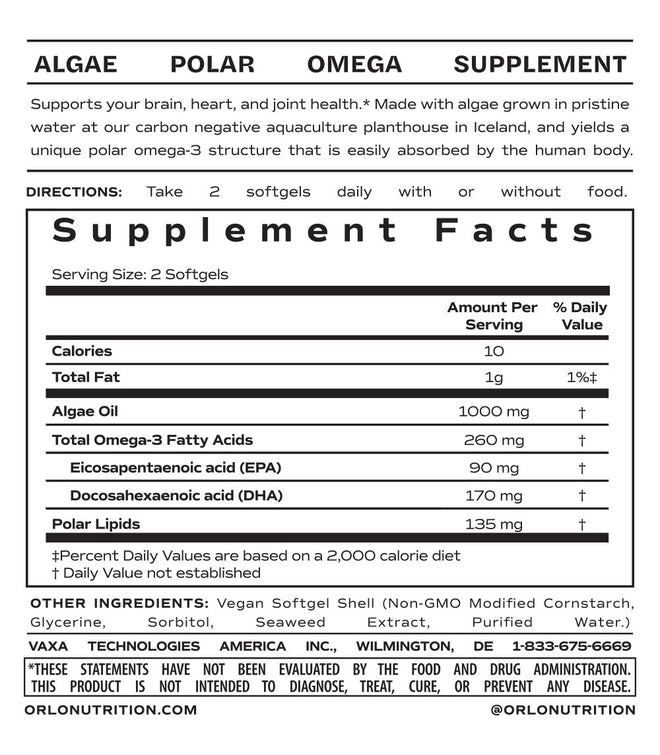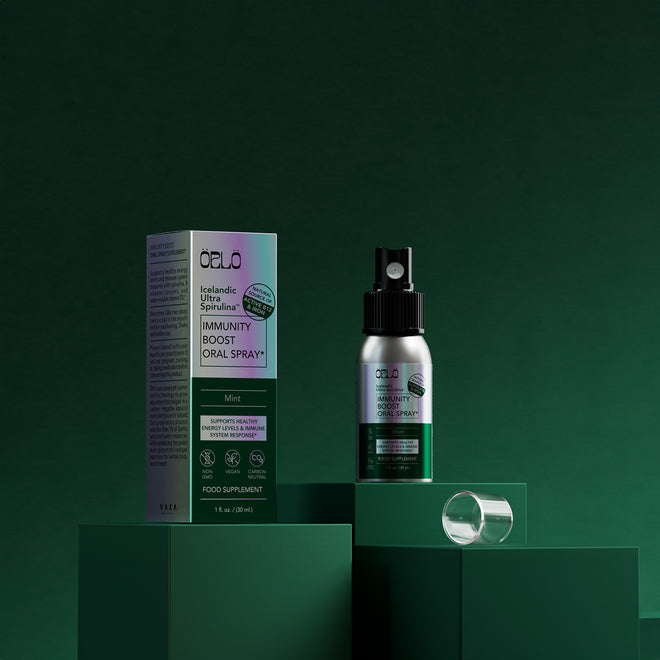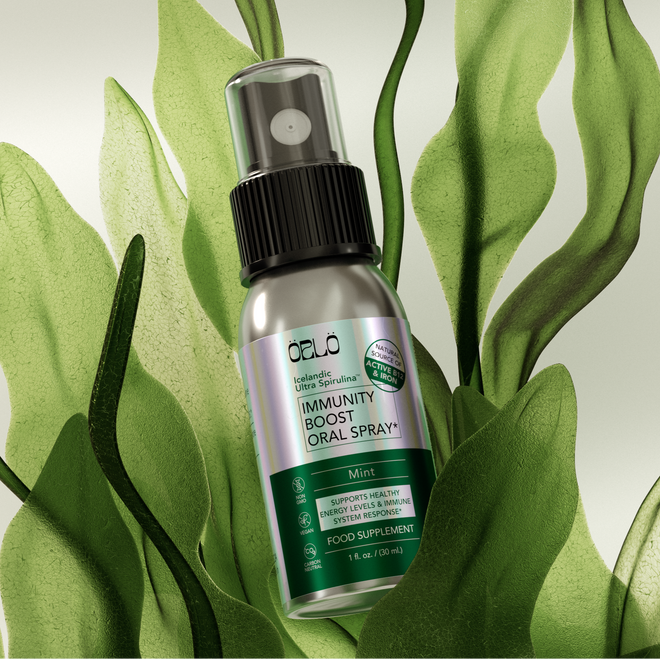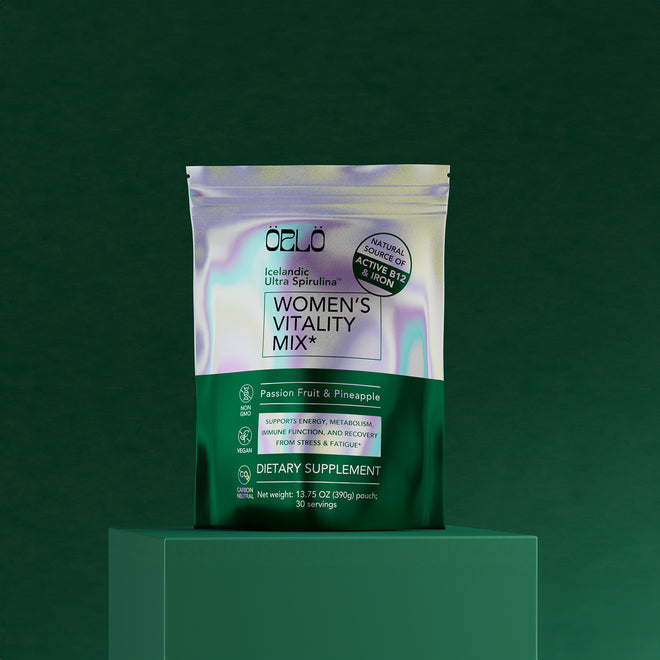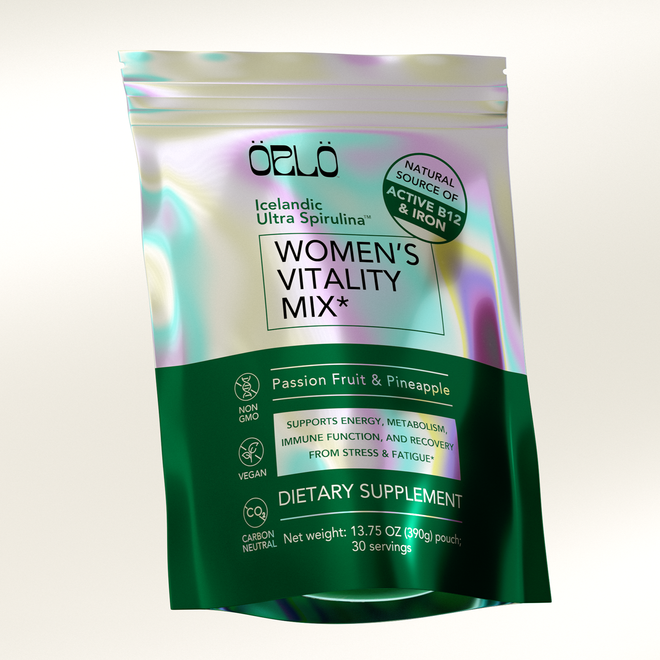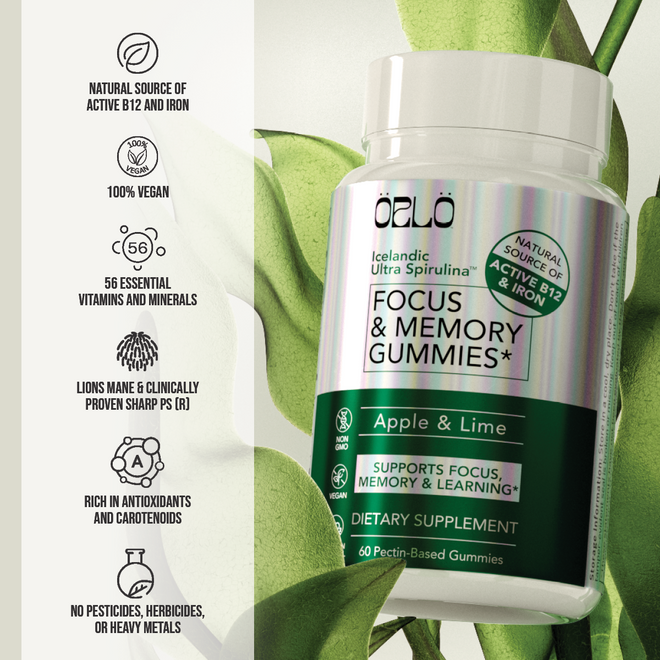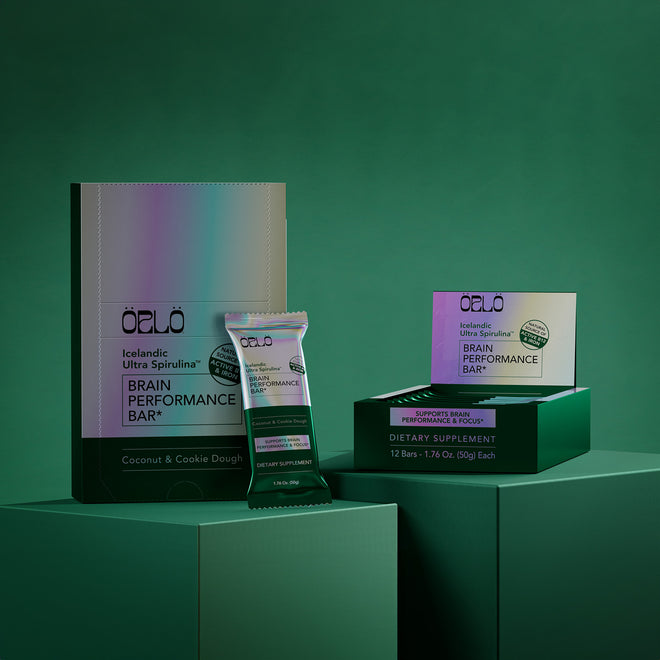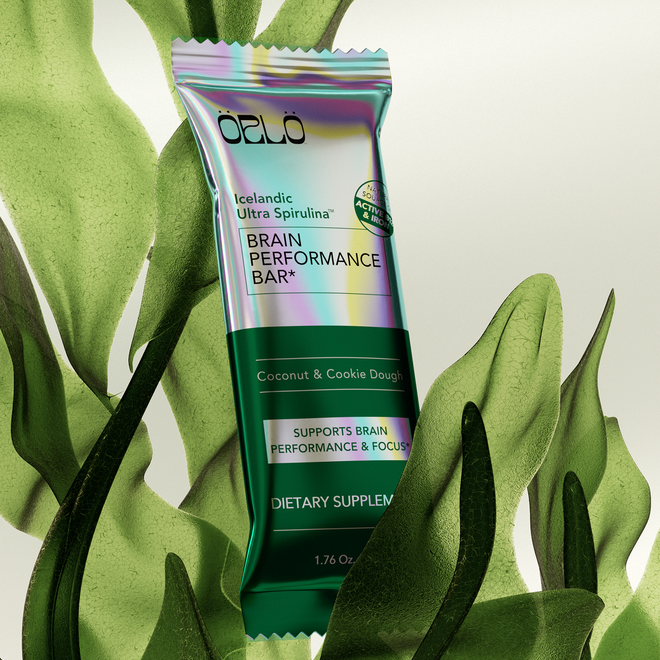25% Off - use code: HOLIDAYS
A Deep Dive Into Sustainable Packaging and Its E-Commerce Impact With Saloni Doshi of EcoEnclose
Watch the episode here
Have you thought about the waste you generate as you procure your food and byproducts that turn into more waste piled up on this earth? What exactly do we mean by sustainable packaging? Here to unpack these topics is Saloni Doshi. Saloni is the CEO and Chief Sustainability Officer of EcoEnclose, a company dedicated to creating plastic-free shipping solutions that are kinder to the environment for e-commerce companies. In her chat with host Corinna Bellizzi, she discusses the move from plastic to paper, the impact of using alternative resources for packaging, and why it's important to be responsible and knowledgeable in our efforts towards sustainability. Saloni also dishes on exciting projects, such as the Algae printer ink and 100% recyclable mailers. Learn more about sustainable packaging and how we, as consumers, can do our part by tuning in to this episode.
Key takeaways from this episode:
- The importance of knowing the source of paper
- Alternative sources of paper aside from trees
- Layers and levels of recycling
- The technology behind EcoEnclose’s Algae Ink
- The possibility of creating mailers that are 100% recycled
Guest Social Links:
- Website: https://ecoenclose.com
- LinkedIn: https://www.linkedin.com/in/saloni-doshi-72057b5/
- Instagram: https://www.instagram.com/ecoenclose
- Tiktok: https://www.tiktok.com/@ecoenclose
- Youtube: https://www.youtube.com/c/EcoEncloseLLC
---
A Deep Dive Into Sustainable Packaging and Its E-Commerce Impact With Saloni Doshi of EcoEnclose
Thanks for joining me for another discussion around nutrition and health without compromise. Have you thought about the imprint that you leave on this earth or about the waste you generate as you procure your food and buy products? Some of them are recyclable, but is this first life or second life? Will it have a renewed use after it's completed its mission in your hands?
These days, recyclability often comes into question with many technically recyclable plastics finding no new home at all and no second life at all. Trash litters our highways, trailheads creek beds, and even our oceans. What are we to do? Where should the responsibility lie? We are going on a journey that invites you to think about your footprint as we focus on all things packaging from the materials you use in packaged foods, products that you buy, the boxes used to ship them to your door, and even those print materials that market and educate you sometimes about the sustainable products and services you have bought or are considering buying.
To get to the bottom of this issue and have an open discussion about how we can do things differently to lessen the impact that each of us has on our consumption, I'm joined by Saloni Doshi. She serves as the CEO and Chief Sustainability Officer of EcoEnclose, a company that's dedicated to creating plastic-free shipping solutions that are kinder to the environment for eCommerce companies. She's passionate about helping conscious companies thrive and pursuing advancements that will help us all build towards a truly circular materials economy. Saloni, welcome to the show.
Thank you so much for having me.
Thank you for taking the time. I understand that you also have a background in the development and growth of sustainable food and agriculture. What led you from that path as the Managing Director of New Venture Advisors to this journey with EcoEnclose?
With the New Venture Advisors, we focused on transitioning mono-crop farms into sustainable poly crop production facilities and how to make them do that in a way that was profitable, worked for the families that owned those farms, but also met the development and sustainability goals of the municipalities. It was incredible work. I targeted it. I love agriculture, but I'm not an expert in agriculture itself. I'm an expert in the business. I did that work on how you can make this viable because people get so scared. They are like, “I know exactly how much I'm going to make from corn, but I don't know how much I'm going to make from the sustainable farm.” That was my role there. I loved the work.
About a couple of years ago, my husband was like, “I'm interested in buying a business.” When EcoEnclose came across our lens, it was tiny. It was about 4 people and 1 product line at the time started by a woman in Colorado. When we met her and realized what EcoEnclose is all about, it is sustainable packaging but also serving some of the most progressive, forward-thinking eCommerce sustainability-minded brands in the world, that was so appealing to me.
At EcoEnclose, you are focused on building a more sustainable, more circular product and guiding companies to do that well and pursue sustainability well. The intersection of business and sustainability was probably even more pronounced at EcoEnclose than it was in my former life in sustainable agriculture. In the beginning, I split my time between both, and as EcoEnclose got bigger, I managed to come here full-time. It’s been a passion project ever since.
I have to say, it is a journey every single day. It's one of those things where each of us makes an impact on every purchase we make. I have been frustrated to the point where going to the grocery store these days, I have not been getting the berries that I want to eat because they are packaged in plastic. It feels wasteful. I'm able to get to my local farmer's markets occasionally, but not every time. Sometimes, the sellers that are there have them in plastic cartons too. It feels like we need to shift our entire patterning into something more focused on what can be, a truly sustainable world. I know that some are concerned with paper use too because they will say, “You have got the paper solution, but that's cutting down more trees.” How do you answer that question when it comes your way?
I will be honest to say that we do have some parts of what we sell that are plastic. It's always 100% recycled with high levels of PCR. We spent a lot of our energy focused on plastic-free solutions and work with a lot of brands that are trying to go plastic-free. You hit the nail on the head. We work very closely with an organization called Canopy Planet. They are phenomenal. They are one of the leading advocates out there to preserve ancient and endangered forests. We are a policyholder for them, so that means we are a Pack4Good policyholder. They are incredible. They are such experts in this space.
We have worked closely with them to understand if you take virgin plastic and replace it with virgin paper and don't know where that paper came from, the development of that paper could have cut down a tree from an ancient and endangered forest. You have damaged the planet more. The preservation of carbon and the essentialism of that tree preserving biodiversity and soil strength is so critical. It's even more critical than that plastic that you are replacing.
Working with them, we have focused on, “What does circular paper mean?” For us, it means a couple of things. First and foremost, it is 100% recycled wherever possible with very high levels of post-consumer waste. The vast majority of our paper packaging is made with that level of recycled content. In the next layer, let's say you can't get 100% recycled content. There are a couple of reasons why. It might be the fact that paper strength does degrade when you increase recycled content. The fiber lens gets smaller, so the actual strength of that paperboard decreases. In a lot of situations, it doesn't matter, but let's say it matters to you in this instance.
The next layer is what they call next-generation fibers. Next-generation fibers are fibers that come from agricultural waste. If you are growing a bunch of hemp to make a CBD product or something like that, can the waste fibers from that production be put into paper? It's a growing space so there's not a lot of capacity or supply available, but it's something we are driving towards quite a bit. If for some reason that doesn't work, then you start looking at interesting on-purpose crops.
The world is moving from plastic to paper.
Miscanthus is an interesting grass that has very long fibers. When you grow this grass, it fixes carbon into the soil, so it's a great crop to grow. If that’s not available, then the next is to get certified and sustainable virgin forest wood that you know doesn't come from ancient and endangered forests. I feel like some people are like, “You talk about this so much.” The world is moving from plastic to paper. It is impossible to get paper. People are not spending nearly enough time being thoughtful about the source of that paper and it’s starting to put pressure on the forest that we need to preserve. It's so essential to me that we preserve these forests long-term for the future of our planet.
I’m in the complete same camp as you, but I also understand that we have introduced several topics all-in-one with this paper question. I want to go to a couple of examples to help people understand. I have used this solution with print materials in the past. I heard of sugar cane as an option for a recyclable and also less-intensive unit within this paper world.
What is that availability now? When I worked with it in the past, we sometimes had a bulk buy. We would buy a lot more than we might need to create the boxes that encompass the product but then we might need for some time. One of the attributes of sugar cane in this case was that if you made cardboard from it, the cardboard would become a little bit more brittle with time. I wondered if that is something that you are looking at and other grasses because sugar cane is like grass. How would you say these stack up in their durability and use?
I give a nod to Canopy Paper. They have a bunch of position statements on the different types of non-tree inputs into offset trees for paper. They do great work. They talk a lot about gas as being an interesting alternative. However, a recognition that the way that sugar cane has grown in most of the world is pretty detrimental to soils. It's a high fertilizer, high pesticide, and high water consumption. It's a mono-crop. It does degrade soils. While it is interesting, if you are already on a sugar cane plantation, it's great.
Let's use sugar cane as its primary source and use the waste product to make paper. That's essential. To recognize that if we try to replace all of our paper with sugar cane byproducts, we are going to damage the soil more or damage the world a little bit more. It’s a very balanced question. I will give you a little bit of what I think is the hierarchy of these non-tree-based inputs, but Canopy Paper does a little bit of a better job.
We look first at carbon fixing crops that are used for a primary purpose and then their waste product can go into the paper. I mentioned hemp. Flax could also be a good example of this where people are using it and growing it. Hemp, in particular, is low water use. It does fix carbon into the soil. It's used to make all of these interesting products worldwide, but not as much in the US. You don't have access to hemp as much, but worldwide, you have a lot of good access to hemp. That waste product can go into the paper.
In the US, we do a lot of wheat, so we produce a lot of wheat. It's not bad for the soil. The wheat straw can go into the paper. We have a product that's 20% wheat straw. I will say wheat straw is not very strong. Hemp fibers are long. It strengthens paper when it's added. Wheat straw’s fiber length is similar to recycled paper. You don't add strength to the paper by adding to it. It's a little bit like recycled paper, so it has some setbacks there.
The next layer that I get excited about is miscanthus, which is called elephant grass. There's something in this country called Hexas. It's an engineered plant. These things grow like sugar cane or weeds almost. They do fix carbon into the soil, and the entire plant becomes tree paper. That's your next level. I then put sugar cane in the same place where I put bamboo. Sugar cane and bamboo are both interesting additions to paper, but we want to tread carefully because the production of these products can divert forest. You can be cutting down forests to make these products. You could be degrading soils by making these products. They are still much better than a tree that could be from an old-growth forest or an ancient endangered forest, but there are potentially other things to look for first.
It's all a balance. You are trying to figure out what's the mix of fibers that we can get into the fiber basket of the paper that we use that's good, but we can't rely on one. If we rely on one, then we are going to degrade our planet by mono-cropping that one. We are trying to figure out what's the right pie and how we split the pie up against all of the different inputs.
When you talked earlier about the fact that taking in one of those old-growth trees could be more detrimental than using plastic. It’s not necessarily a popular discussion in pretty much any community because we want it to be cut and dry, or simple. We are like, “Plastic, bad. Paper, better.” The reality is that there are companies out there that are even making toilet paper from bamboo and saying that it's more sustainable and a better solution to the toilet paper that we would get from a tree. I know this is outside of what you do, but what would your view be on that viewpoint?
I don't personally buy bamboo toilet paper. I love what the mission of those companies is trying to do because it's trying to start a conversation. I love how you said it, which is people want a silver bullet solution. I get a little nervous when any company comes out and says their input into a product is cut and dried perfect because then, it teaches consumers the wrong messaging.
I will say that my team sometimes yells at me because they are like, “Why do you make things so complicated? You put so much content. Nobody can sort through their content. They just want simple answers.” You know very well. Working in this space, there are no simple answers and sustainability. The only way to make good decisions is to get into the nuance and complexity and then make what are hard decisions. No decision is perfect.
I'm hopeful. I'm a dreamer. I'm hoping in 10 or 20 years, we can find materials whose production is net positive for the planet and use those to make some of our single-use packagings. That's my dream, but we are not there yet. You got to first say every product and packaging that we produce is not bad for the planet, but how can we lessen the bad as much as possible? We got to compare and contrast, use data, and then pick the thing that we think best embodies and builds towards the future that we want to get to. It’s not a great answer. We got to use data.

I would much rather my toilet paper come from recycled paper than bamboo. If somebody came to me and said, “There's not enough recycled paper in the world,” I'd say, “Let's use our wheat straw for that. Let's do all of these things before we get to bamboo.” If we accidentally tell everybody bamboo is the answer, then we are going to make some bad decisions as a world. How do we get through the nuance there?
I thought the bamboo people had it nailed, but I have also seen hemp toilet papers.
That’s it. Everybody who's growing the fiber basket without demonizing another material is doing justice to the work we are trying to build towards.
That's a great way to put it. You have also made some innovative steps within what you are doing as a company. I know that, for instance, in the build of the Örlö brand, we worked with you to design our shipper. We printed it with algae ink. This was part of the reason that we chose to come to you because we were thinking, “We are an algae company. If we can print with algae ink, we are creating more of that circular economy as well even from the algae space. We are taking waste stream algae from the nutrition category.”
The algae are already grown for food. This is a secondary product that replaces a petrochemical. It’s not oil-based. We are not leaning into this toxic potential material. We chose to work with post-consumer recycled. I know that that may not be the best solution for some boxes, but because we kept this box small and it has so many turns to it that adds to its structural integrity of it. It came out beautifully and our customers have been raving about it. Overall, it came through well.
I wanted you to talk for a moment about this journey to working with algae ink. I know we would like to say, “It's super simple. You replaced it and had no problem,” but you had to go through some basic vetting and preparation to ensure that the algae could work on your materials, on things like craft, and on a craft that was recycled. How wet is it? Is it going to absorb more? You have to get the formula right. Isn't that correct?
You got it. You have had Scott Fulbright from Living Ink on this show. He's probably shared quite a bit of his part of the journey. He and Steve are the inventors of this incredible innovation, so that's where the credit is due and where EcoEnclose played a role. Scott says this well. He says it a lot on LinkedIn. It’s the idea that you can come up with an invention, but it doesn't matter until somebody starts using it. The first people who start using it are not like the Nikes of the world. Nike launched a line with algae ink, but it took them five years to get there because the first people who use technology are usually the folks that are like, “We want to be Mavericks. We want to try this. We are willing to make mistakes along the way.”
We met Scott in early-2017. There was a technology around algae ink. He had a kick starter where they did something. It was like, “We can screen print with this in our house, but we don't know what else to do with it.” We said, “Let's try to see if we can print our boxes in it.” Scott probably mentioned this. I want to make the idea of what algae ink is because I didn't understand ink until I met Scott. He probably gave this overview, but for people reading, it's helpful to understand this. If you take a bucket of ink, 80% of it is water or solvent. If you are using a solvent-based ink or soy, then 10% of it or so is additives, like things that help with the drying and making sure it doesn't rub off, and 10% of it is pigment.
A lot of people think water-based ink is sustainable, but in most water-based ink, the pigment is still a petrochemical or a non-renewable resource. That pigment, if it's black, the ashes become the pigment for carbon black. That's the tip of black we use all the time. What Scott and Steve did at Living Ink is they said, “Can we make that pigment out of algae cells?”
Waste algae cells from an algae production facility that was used for something else. What they ended up inventing was ink. The pigment is made from algae cells. A typical bucket of that ink is sequestering carbon. The carbon goes into those algae cells and is sequestered into the ink. A bucket of algae ink sequesters the same amount of carbon as the planting of four trees. It's a cool technology.
We hear this story and we are like, “We got to figure out how to use it.” In 2017, Scott's like, “We are not ready to use it yet.” We are like, “Come on down. We have got a flexographic printer in-house. Bring it.” I remember the early runs. There were all these things that you would know if you were printing. It was foaming. It was not drying. It was not working very well. At that same time, we started talking about algae ink. A couple of customers were like, “Let’s figure out how to use it for my box.” One of them was Bedrock sandals. They became the first customer that was like, “Figure it out and try to use algae ink on my boxes.”
Scott would keep going back and iterating. We'd say it's foaming or not drying and he would change the formulation. Early on, we had Bedrock that was like, “Print with algae ink.” Early on, we had to do 50% algae and 50% standard ink blend in our ink. Over time, we got it to 70%, then 80%. A year later, we were at 100% algae ink. The ink that they came up with overtime was spectacular. It's velvety and beautiful. The pigment’s even better than a standard black, but it took a year of that iteration.
They can even print it on a t-shirt. I have an Örlö shirt that is mine. It’s been wandered a few times, but it's still very black. It’s printed on the front and back. Similar to your company, Farm Fresh in California had to do their innovation on their end. They made sure they could make it work and print well on textiles, and be as good as what they would traditionally screen print with and launder as well and stay. I was so impressed with their ability of them to get to this point where the black in the shirt is as black or more black than other prints that I have that have been laundered around the same number of times.
Extended producer responsibility is sort of a trend sweeping the nation.
It's one of those things where even the CEO, Ohad Bashan, of Vaxa Technologies said, look, “If you want to work with this algae ink, you have got to prove to me that it's going to be good enough. If we are going to sell it or use it to market our products, we have to know.” I ordered a sample and I laundered that so many times. They wanted to verify, “Is this going to work?” I'd seen some samples from you guys that you'd printed with the algae ink and they came out nicely. When you are going for a craft or when you are understanding that you want it to be an eco-play and leaning into that, being able to tell that story full circle is important.
You guys do such a good job messaging it. If somebody is like, “I want a black that's exactly like the black I normally print with, but use algae,” you are probably going to be able to get there, but not why to use algae. Use algae. Tell your story. Make your whole brand align together around sustainability, and then your customers will love it. You helped to pave the way for more companies for algae The dream of Living Ink is there's so much black ink in the world. Can we replace all of that black ink with ink that's not coming from fossil fuels, but pigments that are coming from algae cells or other renewable technologies?
I will get to the point where the black is on my coffee cup. I have had this cup for a very long time. It's Beat To Hell. I have traveled with it over the entire planet from Australia to Europe. I bring it with me, but it is black, so what is it colored with?
They are getting into makeup, like mascara and eyeliner. You look around. Once you start thinking about it, you are like, “Everything's black.” It's either black dye or carbon black in some capacity.
We got deep into that. I want to talk for a moment about what point when it gets to these cardboard pieces that are 100% post-consumer recycled. How many lives can it live past this moment? The fibers have gotten rather short, is this its last life or do you continue to send it through to recycling and see what happens?
They say paper, with our de-inking technologies, has 5 to 7 lives. There are many more lives available for this. If it's in a corrugate of any capacity, it is a high enough quality to be recycled into something interesting in its next life. I'm making this up a little bit because it all depends on MERF and who they are selling to. If you get high-quality virgin corrugate, it gets turned into maybe a 30% recycled corrugate. Maybe in the next life, it's 100% recycled. It then could become a paperboard cereal box. It can become a thin sheet of paper or toilet paper.
Eventually, it degrades down the line where things like paper towels, toilet paper, and tissue paper become harder to recycle. What is great about paper is that it is naturally biodegradable, so its ultimate life could be compost long-term. The idea is like, “How do we get it through those 5 to 7 lives before it ends up being composted?”
I have added mine as a weed barrier in my garden. I was thinking of this particular case because it's algae ink and not petrochemicals. I wouldn't mind putting it in my strawberry bed, for example, to keep the weeds at bay and have it underneath the bark layer. That would enable me to keep more moisture in, especially during these hot summer months, without using a plastic-based type material, like the weed fabric that they would sell at the garden center. That's where I am. I’m like, “If it doesn't leave my door and get into this recycle mode, how can I repurpose it in my home?” We also compost. We need brown material in the compost, so sometimes, we will tear up some papers that are not bleached to be part of that cycle.
That's great. We have a bunch of local gardeners who pick up our cardboard. We manufacture the cardboard in-house and then we have got scrap. They will pick up the scrap. I do the same to lay down in their raised beds. It's incredible. It's a great solution.
I discovered it while watching videos on YouTube and I was like, you can do that. I have never thought about it. It's something new I tried and so far it's working quite well.
Good for you.
Thank you. I wonder if there's anything new that you are working on that you are excited about. You mentioned something in the stamp arena with algae inks. Talk about that.
I will talk about algae, and then we have got one other thing I will talk about there. For years, we have been printing on boxes. We have had some smaller companies who are like, “I'm not at a level where I can print my boxes with an MOQ of 250 or 500 with algae ink. Can you get stamp ink?” Stamp ink is interesting. It's a little bit different because it needs to have a different viscosity and consistency than a flexographic ink. It also has to stay wet in a stamp pad, but not be sticky. It has to dry quickly on your substrate and has to work with this interesting quality rubber stamp.

I spent two days back in a lab trying to mix a bunch of things like water, glycerin, alcohol, ink, and pigments. I finally got to a consistency that I felt good about. I had been testing it for a week and then got 10 or 20 folks to be sampling it. We have got ten people sampling this stamp pad ink. What is cool about this is that it will open up the algae ink technology to companies that do stamp as they are branding. There are the smaller companies and people maybe stamping urgent things on their papers. It's going to open up this technology to a bunch more players than those who have access to it. I'm hopeful. We will have it live on our site. It will be a great way to make the technology more accessible.
I love that. I happen to know the founder of a company out of the Pacific Northwest called SeaBar. They use spray paint on their box, but this might be a better solution.
Do they do a stencil with spray paint?
Yeah. Their mission is to get plastics out of your bathroom. They do bar-form shampoo and conditioner. They do have plastic as the container for it because it needs something that doesn't degrade in the shower. It’s not glass, so it’s not breakable. It's one single piece that you could use multiple times over and keep refilling. It greatly reduces your reliance on plastic, and it is a post-consumer recycled plastic to start with. They are making some inroads in that way to clean up our bathroom routines. It seems like if you had a solution like that, that might be something he's interested in too.
If anybody is reading and they are like, “I don't know what to do with that” I'm open to sending you a batch of ink that you might formulate and add water. I could tell you what things to add because different applications need different consistency.
You could even use a roller over a stencil to do something like that. If you are able to put ink on a roller on a pad to stamp with, you could equally probably easily roll it onto a stencil and leave that mark. That's interesting. What else did you want to share with us? You said you had one more topic you wanted to cover.
I'm going to give a little teaser. We are excited about it. I know we have been talking about boxes. Every mailer has what they call this seal strip. It reveals the stickiness that then closes the mailer. What is interesting is that even if this actual mailer is 100% recycled, that seal trip is made with virgin paper and is Silicon-coated. People will argue if Silicon is plastic or not. In our definition, we call it plastic because it is a synthetic material even though it's made of sand and not fossil fuels. It has a Silicon coating on it that renders it not plastic-free in our mind and also not recyclable or compostable.
We are this close to getting a zero waste line or what we call a zero waste liner as that seal strip. If that's the case, it would be a 100% recycled seal strip with no Silicon coating. It’s just a UV coating where that paper is 100% recycled, curbside recyclable and compostable if the dimensions of it don't allow you to recycle it in your recycler. It seems like a small thing, but I'm very excited because the whole product that we sell will live up to more of our ideals of circularity. It's been a dream of ours for a long time to get this to happen.
Building a circular business is not a simple feat. You revealed one simple thing that could seem rather easy. In your home, you could tear that portion off and put it in the recycler, but how many people are going to do that? One of the challenges that recyclers face is that consumers don't know these things because it's hard to know everything. You put it in the recycle bin because you think it's recyclable and then it gets disposed of. Often, it contaminates other materials in your recycle bin that would otherwise be recyclable. Therefore, the whole batch gets ruined.
I know that there are different municipalities tackling that in different ways. In some cases, it's mailers to your door to educate you about it. In the case of my mother-in-law's home in San Jose, they received brand-new garbage bins that are the big, old kind. They used to have the small ones. They are like, “They want us to put everything that is ever touched food into the garbage.”
They are making that draconian line in the sand in Silicon Valley, this very progressive place, because there was so much inordinate recycling happening in the area of materials that were not truly recyclable or that couldn't be processed at the local recycler. We need to shift our thinking into the things that we put in our bins are waste leaving our homes. Whether or not it's leaving as a second life or its final destination being in the landfill, it's all waste. If we can work to reduce that waste and create as many circular economies to scale as possible where these things are reborn and they have a new life, so it’s cradle to cradle and not just cradle to grave then we will be in a better spot. At least that's my thinking and you are on board with it as well.
Plastic recycling is an interesting time for all of us. Everybody's anti-plastic, and I get that, but you hit the nail on the head where we got to be thinking about how we minimize single use.
Also, how do we minimize our waste? How much stuff goes in that garbage bin? If your recycle bin is also technically garbage, how do we reduce that? If you think about how they handle things in much of Europe, the soda bottles you get are all glass and not plastic in many places. They are not put in the recycle bin. They are taken back to the grocer and they will refill them.
Avoid demonizing materials or people or companies. Avoid thinking something is the silver bullet and recognize for all of us--consumers, brands, producers, et cetera--to make strong, good decisions.
It's like the old Coke bottle method of work. You may remember them. They are those thick glass Coke bottles or milk bottles that are reusable. That's how we get our milk in our home. I go to the grocer and get my rebate back, and then I buy the new one each time. It's reducing our reliance on these things that even if they are multi-day use, are one time into your home and then out in the garbage.
I love that because then, you don't have to recycle it. You are just using the item as it is. We passed the EPR legislation in Colorado. I'm very proud of having that have happened here, but if we can have more of them happen nationwide, we could get back to some of these common sense ways to think about our packaging.
Tell us more about that because I had not heard what passed in Colorado.
Extended Producer Responsibility is a trend sweeping the nation but only has been successful in a couple of places like Maine, Washington, and Colorado. The idea is those producers, the packaging providers, and then the brands that buy from those packaging providers, have to be held accountable for the waste management of the packaging and products that they produce. It takes different forms.
The general idea is that an organization is identified and producers have to fund that organization. That organization has two parts. One is maximizing education and access to responsible waste stream collecting, such as recycling and composting, and making sure everybody in the state has free access and knows how to do it. The second is enhancing and improving the recycling facilities and recycling supply chain in the state and getting brands to use more PCR. Those are all of the things that help to build a circular economy.
Brands and consumers can only do so much. At some point, you need some legislative action that incentivizes all of us to work and grow together. That’s what this EPR legislation is doing. There have been a dozen or so bills that haven't passed nationwide, but they always say that the most successful way to get a bill to pass is to have it fail one year and then over time, it passes. I'm hopeful that in 5 to 10 years, it's much more of a standard protocol in this country. It is very popular in Europe and Canada already.
We will get there. If we have anything to do with it here at Örlö. Creating a shipper that operates as a refillable bottle and something that you use multiple times. Having the pouches in a post-consumer recycled plastic with a touch of virgin plastic touching the soft gels because that's a requirement of the FDA.
We are creating a pouch that is recyclable as opposed to some of those that are plastic on the inside and paper on the outside. They look good. They look the part of eco, but they aren't recyclable. Therefore, they can't have another life after that moment. We need to also as consumers be thinking about these things and how we can then contribute to the passage of a law like that. They are more mindful of waste usage around the globe. It’s not giving up and shifting to a larger trash can because your local community can't figure something out.
We can do better. I'm pleased to say we haven't had to do that in Boulder County yet. You also feel for those folks trying to deal with your recycling. You are like, “If people are going to wish-cycle instead of properly recycle, what else are they going to do?” This legislation can help get us to a better place.
I did see a video of somebody at a recycle center showing things that were wish-cycling. There was everything from umbrellas to CDs.
There were also bowling balls. Waste management has said that they get an insane amount of bowling balls. I'm like, “What?”
It's ridiculous. As we prepare to wrap, I would love to know what your favorite meal is and what does nutrition without compromise mean to you?
I'm going to say something a little bit dorky. My favorite meal is that every morning, my husband makes a kale smoothie. It has kale from our garden, berries, and some peanut butter. That meal is my favorite thing because it's an active generosity because he doesn't usually prepare meals. It's the one thing he prepares for me every day.

Why I love it is that 80% of what goes in that blender is grown in my home or around my home. I love that part of it. It's the idea that somebody has prepared something for me, thinking about my health and wellness and how my day is going to go, and that it comes from my home. Meals like that to start your day off are great. It prepares you emotionally to have a wonderful day and to step the right foot forward as you start what could be a hectic day. Those are some of the elements that are core to what I think about nutrition without compromise.
That's beautiful because it's a thankful moment for you too. You are appreciating your partner and your garden. You get to have a great energy lift to your morning that is both natural and healthy. That's beautiful. Thank you so much for sharing that.
Thank you for asking a great question.
I want to wrap quickly, but before I do, can I ask you a final question?
Of course.
Is there anything that I haven't asked you that you wish I had? If there is something, you can ask and answer that, or leave us with a final thought.
You have done a marvelous job, so I wouldn't say you haven't asked anything. The final thought, which hopefully, readers know has been a thread through what I'm talking about, is a recognition of data, science, and balance as you are thinking about the world of sustainability. Avoid demonizing materials, people, or companies. Avoid thinking of something as the silver bullet.
Recognize that for all of us, consumers, brands, and producers to make strong, good decisions. The more we know the facts and navigate them in a way that's collectively compassionate and moving us to the end vision we want to get to, the better we are going to be. We are going to make a lot of bad decisions if we think there are silver bullets and demons out there.
Isn't that the truth? Thank you again so much for joining me.
Thank you so much.
Thank you everyone for joining us for this discussion. I hope as you move into your daily life that you will think a little bit more about the packaging choices that you make. Even those shipments that you get from Amazon or other eCommerce providers. If you are not happy with how they ship you something, reach out to them and tell them. There is no better act than that to simply push these makers to change. They could be choosing something more mindful and less plastic-based. Ultimately, you can vote with your dollars and choose to purchase from companies that are making those choices already.
I encourage you to check out EcoEnclose. You can go to their website at EcoEnclose.com. Saloni Doshi is also present on LinkedIn. You can chat with her there. She's quite responsive and is working every day to try and make our world a little bit of a better place with more circular options for packaging and shipping. Thank you for visiting us and for thinking about what nutrition without compromise means to you. With that, I simply want to raise a glass of my coffee and say, “Here's to your health.”
Important Links
- EcoEnclose
- Saloni Doshi
- https://www.Instagram.com/EcoEnclose
- https://www.TikTok.com/@EcoEnclose
- https://www.Youtube.com/c/EcoEncloseLLC
- New Venture Advisors
- Canopy Planet
- Örlö
- Living Ink
- SeaBar
About Saloni Doshi
 Saloni is the CEO and Chief Sustainability Officer at EcoEnclose, the world's most innovative provider of sustainable shipping solutions for ecommerce brands. She is passionate about helping conscious companies thrive and pursuing advancements that help build towards a truly circular materials economy. Prior to EcoEnclose, Saloni was a Managing Director at New Venture Advisors, a consultancy that supports the development and growth of sustainable food and agriculture. Professionally, Saloni's career has balanced social justice, environmental progress, and strategy - including the launch of Fresh Takes Kitchen, a social enterprise committed to improving healthy food access and serving as a Director at Teach For America. Saloni lives in Colorado with her three children, whose deep and growing passion for the planet and all of its biodiversity inspires her for what the future may bring.
Saloni is the CEO and Chief Sustainability Officer at EcoEnclose, the world's most innovative provider of sustainable shipping solutions for ecommerce brands. She is passionate about helping conscious companies thrive and pursuing advancements that help build towards a truly circular materials economy. Prior to EcoEnclose, Saloni was a Managing Director at New Venture Advisors, a consultancy that supports the development and growth of sustainable food and agriculture. Professionally, Saloni's career has balanced social justice, environmental progress, and strategy - including the launch of Fresh Takes Kitchen, a social enterprise committed to improving healthy food access and serving as a Director at Teach For America. Saloni lives in Colorado with her three children, whose deep and growing passion for the planet and all of its biodiversity inspires her for what the future may bring.
